Social Media Audit: Think Beyond the Likes and Shares

Keeping your brand’s social media presence fresh isn’t just about posting regularly or chasing the next viral moment. To really understand what’s working (and what’s just fluff), you need a clear-eyed look at your performance across every platform.
This is where a social media audit comes in.


Source: Instagram
What is a social media audit?
A social media audit is a complete review of your brand’s presence across social media platforms. It helps you understand what’s working, what needs fixing, and where your social media strategy could go next.
At its core, it’s about asking: Are we reaching the right people, in the right way, on the right platforms?
What a social media audit covers

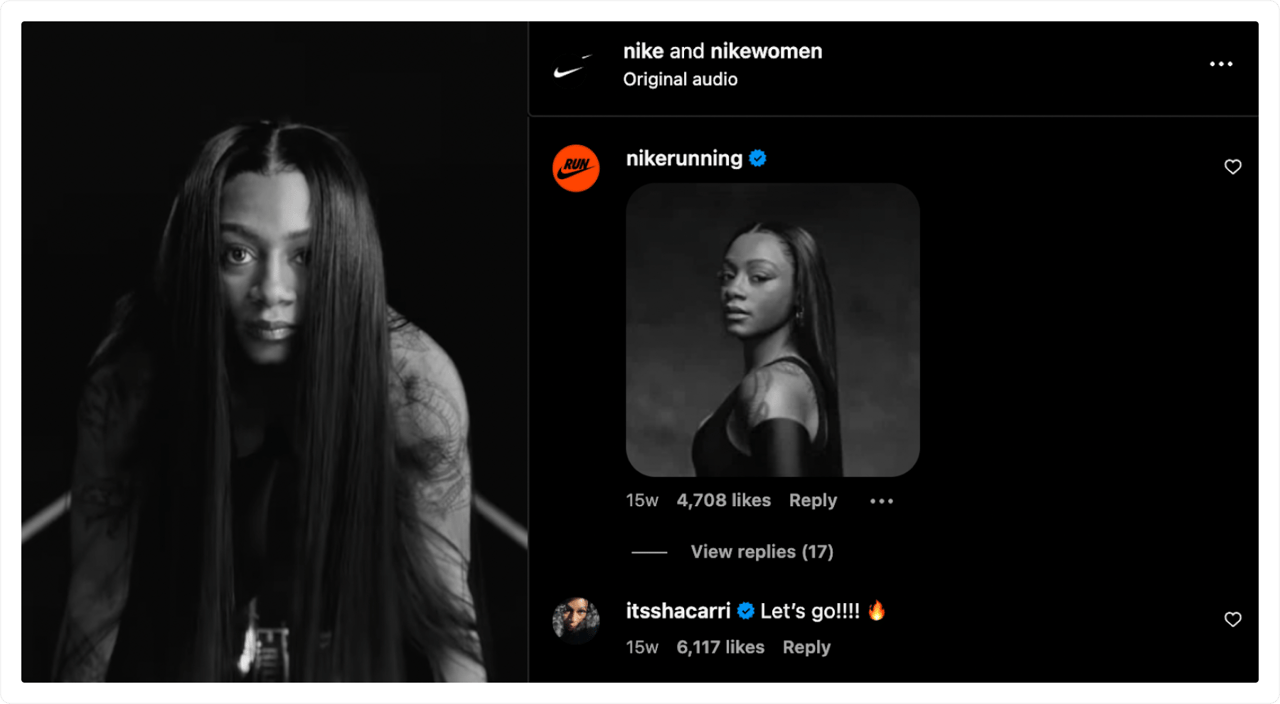
Source: Instagram
A thorough social media audit typically includes:
Social platforms review—What social media channels are you active on, and are they up to date? Are there any new social media platforms you should conquer?
Social media performance check—Which posts are performing well, and why? What’s falling flat?
Audience demographics and insights—Who’s actually engaging with your content? Is it your target audience or random social media accounts?
Brand consistency—Is your voice, messaging, and visual identity consistent across platforms? One step further, it includes a brand sentiment analysis to help you understand how people react to your brand.
Strategic fit—Are your efforts supporting your bigger marketing goals? How are they aligned with the overall business objectives?
It’s more than just likes and follows
An effective social media audit digs deeper than surface-level metrics and social media reports. It looks at:
Brand health—Are people talking about you positively, or are there warning signs?
Audience perception—What do people really think about your brand?
Alignment—Is your social content aligned with campaigns, sales goals, and brand voice?
Visibility gaps—Are there conversations happening about your brand that you're not even part of?
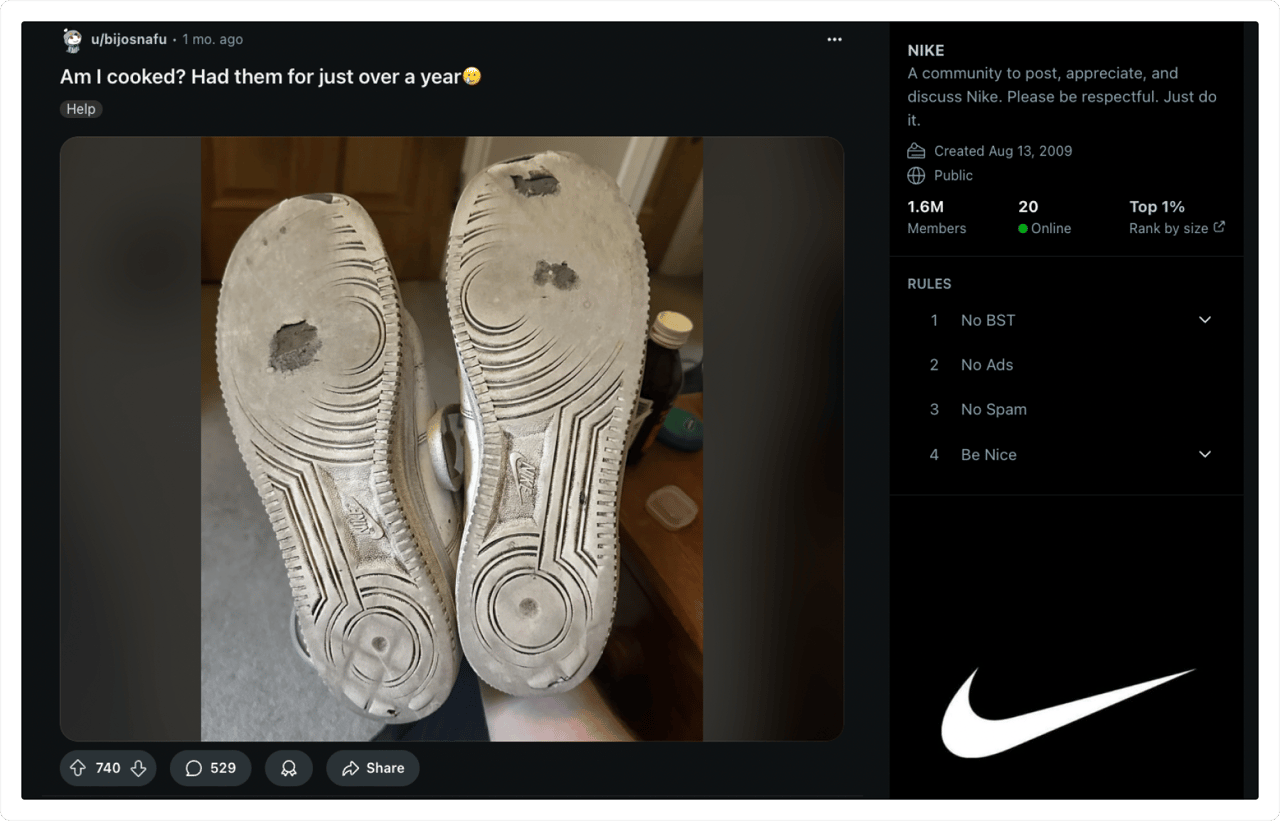

Source: Reddit
Moreover, a smart audit includes competitor analysis and checks in with key performance indicators to estimate whether your social media content is on the right track.
Think of it as a health check for your entire social presence—not just a report card, but a map for what to do next.
Why a social media audit matters
A social media audit isn’t just a checklist task—it’s a strategic tool. When done right, it helps you understand the big picture and make smarter, faster decisions.
Identify content gaps and high-performing formats
Audits show you what’s getting traction and what’s being ignored. You’ll spot top formats (carousels, short videos, memes) and know where to double down, according to audience preferences.


Source: Instagram
At the same time, you’ll uncover gaps—topics or content types your audience expects but isn’t getting.
Surface audience shifts and evolving interests
Audience behavior changes fast.


An audit helps you track those changes—what people care about now, what they’re tired of, and where they’re spending their time.
It’s how you stay relevant.
Spot brand perception issues early
Before a PR issue escalates or customer trust erodes, there are signs. Brand reputation monitoring is all about keeping tabs on those signs, and audits provide valuable insights on your brand's rep online.
Audits surface red flags in sentiment, engagement drops, or rising negative mentions.
You can’t fix what you don’t see—and this helps you see it sooner.


Justify budget allocation or channel prioritization
Not every platform deserves equal effort.
Audits show where your audience is most active and where content performs best, helping you focus your time, team, and budget. They help you gain insights into audience demographics and finesse about their taste.


Source: Dolce&Gabbana
It’s data you can take to leadership when asking for more resources (or cutting back).
Inform future strategy based on real behavior
It’s easy to guess. It’s smarter to know.
Leverage relevant data to master social marketing strategy. Audits replace assumptions with facts: what users engage with, what they ignore, and how they actually interact with your brand.
This makes your social media strategy sharper—and your results stronger.
How to conduct a social media audit
Here’s your step-by-step playbook for running a social media audit. The kind of audit you'll use for a strategy that does more than simply increasing brand awareness.
Inventory your channels and accounts
Start by listing every social media account tied to your brand, active or not.
Inactive or unofficial accounts can confuse followers, dilute your messaging, and even pose a security risk. Furthermore, you may be looking into Facebook insights while your entire audience hangs out on TikTok.
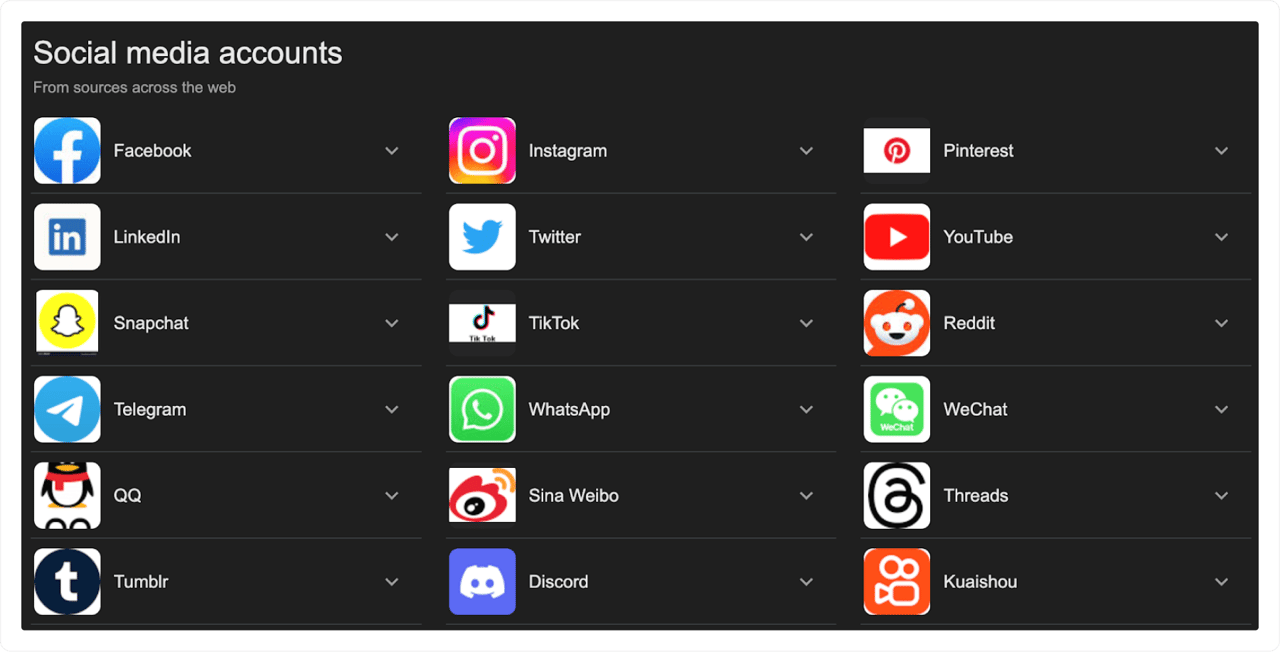

Source: Google screenshot
Here's what to do to clean up your profiles and focus:
Create a list of all platforms where your brand is present (e.g., Instagram, TikTok, LinkedIn, Twitter/X, Facebook, YouTube, Threads)
Include both active and inactive accounts
Flag any duplicate, outdated, or unauthorized pages
Check bios, profile images, handles, and links for consistency
If you’ve recently rebranded or updated your logo, this is the time to make sure all accounts reflect the latest version.
Analyze performance metrics
Once your channels are mapped out, dive into the numbers—but go beyond vanity metrics.
You’re not just asking “how many likes did we get?” You’re asking, “What drove action or connection?”
Analytics tools go a step further than the basics you get from insights within your social media platform. Use social media analytics tools to dive deeper into the audience's behavior, intent, and trending changes.


Source: YouScan
Key metrics to review per platform:
Engagement rate (likes, comments, shares relative to follower count)
Reach and impressions
Click-through rate (CTR) on links
Follower growth trends
Post frequency and timing
Most engaging content types (e.g., Reels vs. carousels vs. polls)
For example, your Reels might be getting 3x the engagement of static posts, but you’re only posting them once a month. That’s a missed opportunity.
Review content strategy alignment
This is where numbers meet narrative. Your content should reflect your brand’s voice, values, and goals, while speaking to what your audience actually cares about.
Ask yourself:
Are we sticking to our content pillars (e.g., education, inspiration, promotion)?
Does the tone match our brand voice—friendly, bold, expert, etc.?
Are we posting consistently, or just when we have time?
Are our CTAs clear and aligned with campaign goals?
If your brand voice is playful but your captions read like press releases, it’s time for a tone audit.
Evaluate audience engagement
You’ve looked at what you’re posting—now look at who’s engaging. Target audience analysis should tell you more about what your desired audience is really interested in.
Market research, on the other hand, helps you grasp what's going on in the industry and how the target groups are responding. And when a focus group doesn't cut it, go for a comprehensive tool.

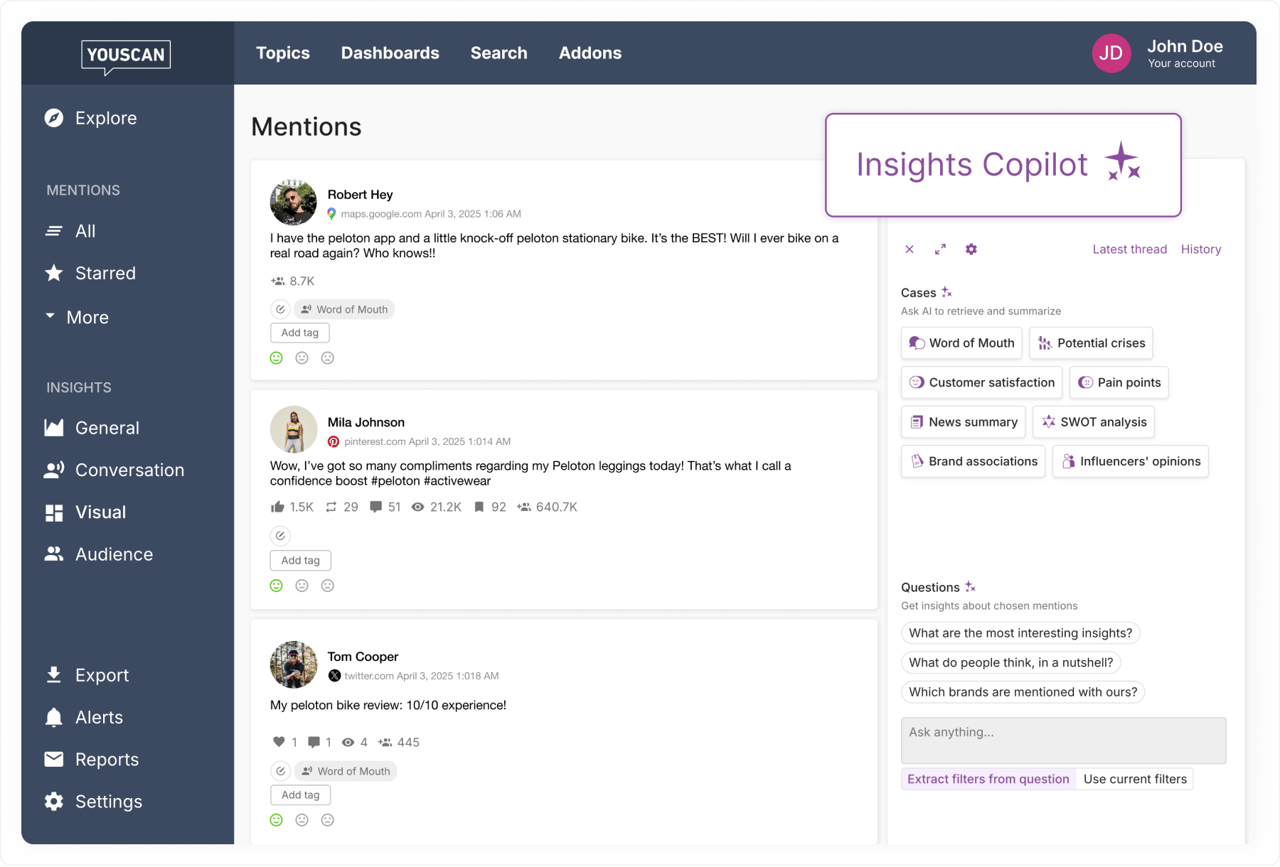
Source: YouScan
Questions to guide you:
Are our followers the ones who we want to reach? (Consider job titles, interests, locations)
What types of content get comments and shares, and which get ignored?
Do we respond to messages and comments fast enough?
Are we building community—or just broadcasting?
Let's say your average response time is 48 hours on Instagram DMs, but your competitors reply within 2–3 hours. You may be losing potential leads or customer loyalty.
Use social listening for deeper insights
Here’s where tools like YouScan go beyond what native platform analytics can tell you.
A social media audit isn’t complete unless you also evaluate:
What people say about your brand—even when they don’t tag you
Where your brand appears in conversations, visuals, and trends
How sentiment changes over time (praise, complaints, sarcasm, outrage)
What YouScan can uncover:
Brand mentions on Reddit, forums, blogs, and news, not just Twitter or TikTok
Visual mentions—e.g., someone wearing your brand’s shoes without naming it
Early warning signs of a brewing crisis (spike in negative sentiment)
Emerging trends in your niche that you haven’t posted about yet
Influencer activity around your product, even if you didn’t pay them
This is insight you won’t get from a spreadsheet alone, and it's a unique edge of social listening over social monitoring.


Identify what to fix and what to double down on
Now that you’ve gathered the data, it’s time to make it actionable.
Create a short report or spreadsheet that summarizes:
What’s underperforming—and why (low engagement, off-brand tone, poor targeting)
What’s working—and how to scale it (top formats, times, themes)
What to change—fix outdated bios, set up automated replies, tweak visuals
What to test—new formats, content buckets, hashtags, or channels
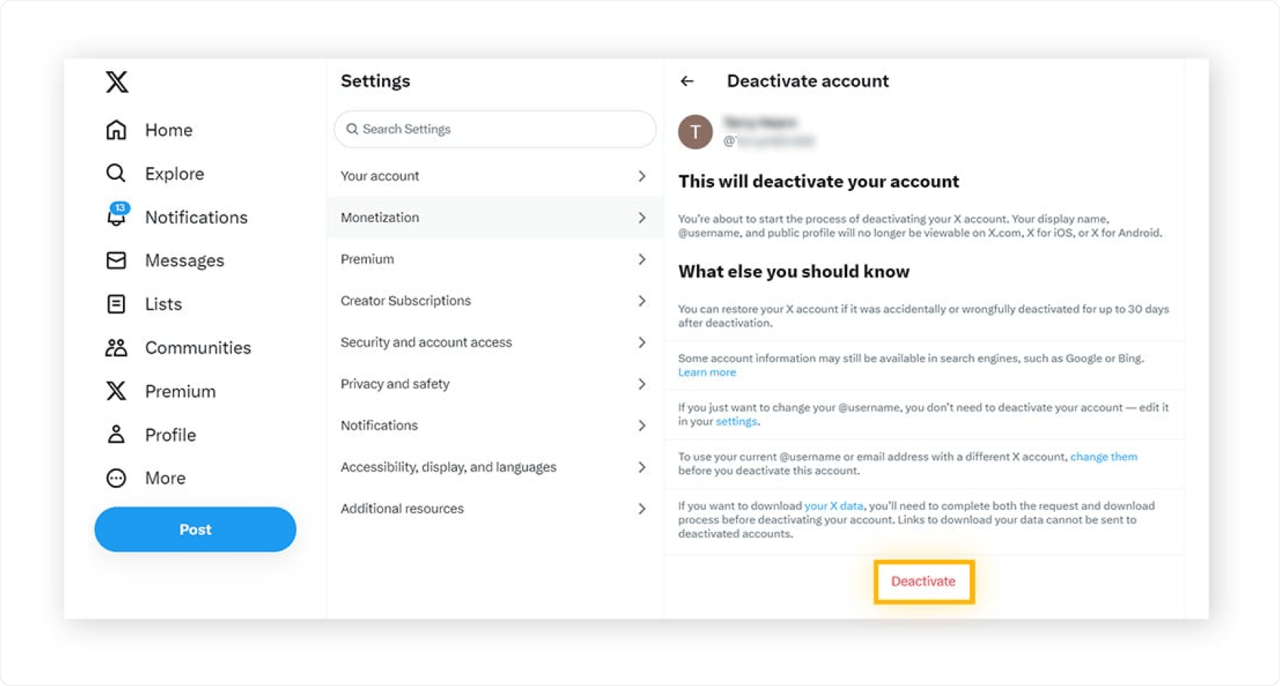

Source: X
Then, take action:
Archive the dormant Twitter account that hasn’t been updated since 2021
Increase weekly short-form video posts from 1 to 3 based on engagement trends
Use YouScan to monitor emerging Gen Z slang and adjust tone on TikTok accordingly
Reach out to relevant influencers with collaboration proposals
Social media audit template or checklist
Ready to get hands-on? You can leverage social media audit tools or create your own social media audit template with a basic tool such as Excel.
Here's a simplified version of the audit process you can turn into your own template. The goal is to create a custom spreadsheet or table that helps you track insights across different social media platforms—in one place.
Suggested columns for your audit table
You can create this in Google Sheets, Excel, Notion, or wherever your team tracks performance. Here's a basic column layout to get you started:
Platform—Instagram, LinkedIn, TikTok, etc.
Handle—Your official username or page link
Follower count—Total as of the audit date
Engagement rate—Average based on likes/comments/shares per post
Top-performing posts—Link or short description of your best content
Issues spotted—Broken links, off-brand tone, low-performing formats, etc.
Next steps—Clear actions: update bio, increase Reels, run sentiment analysis, etc.
Bonus columns if you want to go deeper
Target audience match—Yes/No or % based on who’s engaging with your social channels
Sentiment trend—Positive, neutral, or negative (track this over time)
Visual consistency—Rate from 1–5 or note what needs improving across all your social accounts
Reply time—Average time to respond to DMs or comments
ROI—Question what the social media ROI is, and whether or not your investment is with the right marketing strategy
YouScan insights—Add notes or screenshots with your social listening data from various social media platforms
Make it your own
You don’t need to track everything—just what’s meaningful for your brand and current social media presence. Start from what you usually check within social media monitoring, map out what is missing, and update the checklist.
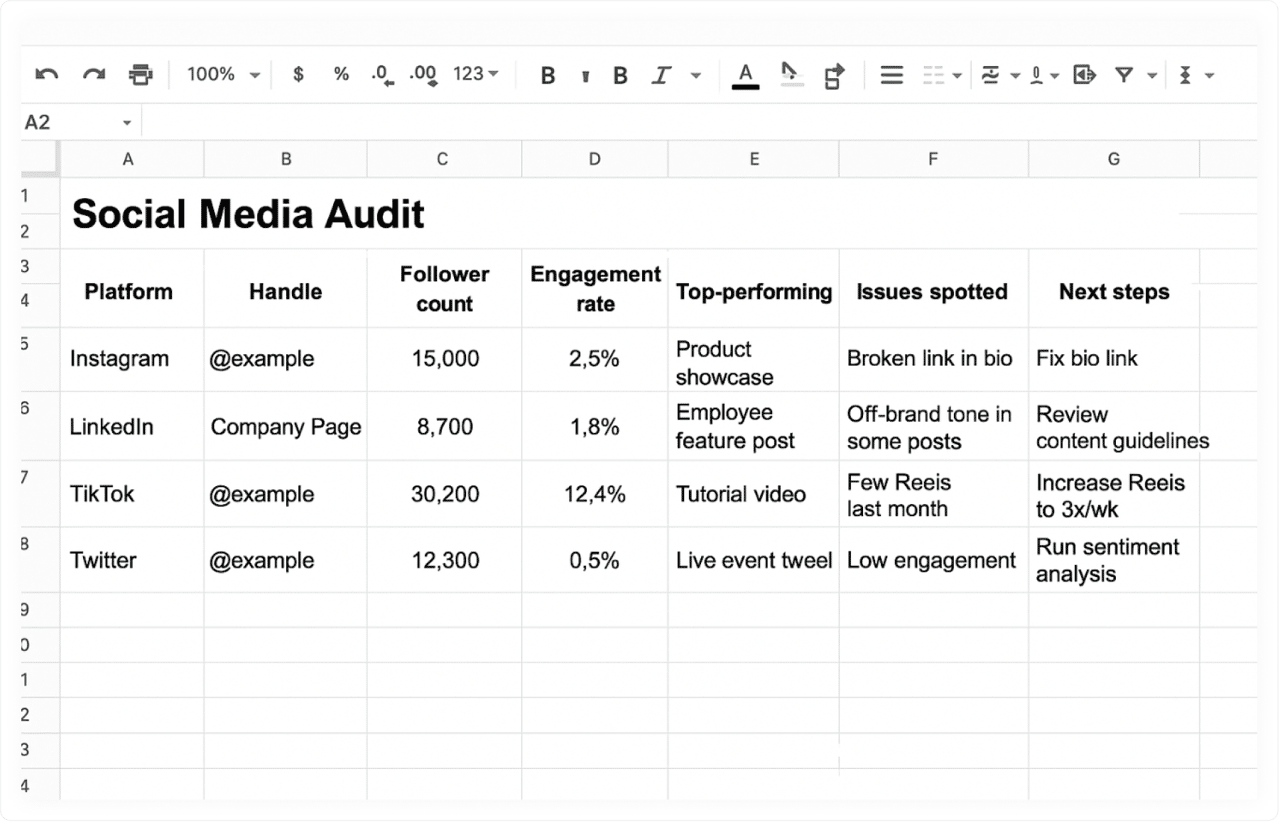

If you post 3x a week, tracking post type might matter more than follower count. When your content volume is limited, every post carries more weight. Instead of obsessing over how many new followers you gained, your social media efforts should focus on what kind of posts drive the most engagement.
If your brand is highly visual, visual consistency deserves its own row. For fashion, lifestyle, food, or design brands, aesthetics aren't optional—they’re core to your identity. In your audit, assess whether your social media campaigns have a unified look and feel. Leadership cares about outcomes.
If you’re reporting to execs, make sure to highlight budget implications and wins. Your audit should connect social media performance to business value. For example, if engagement on LinkedIn has tripled but you’ve only invested 10% of your budget there, that’s a case for reallocating funds.
Pro tip: Keep one tab for raw data, one for trends, and one for actionable insights. That way, your audit becomes more than a report—it becomes a social media strategy tool.
How often should you do a social media audit?
There’s no one-size-fits-all schedule, but the key is consistency. A social media audit should be part of your regular marketing routine, a pillar of your social media strategy, not just something you scramble to do when things feel off.
Here’s a simple rule of thumb:
Quarterly—Ideal for most brands. Every 3 months gives you enough time to track patterns, spot shifts, and adjust your social media marketing strategy.
Monthly—Useful for fast-paced industries like fashion, news, or tech, where trends change weekly and content velocity is high. To keep your social media posts current and engagement metrics on a constant level side-by-side with your competitors, put all the data from the audit into play.
After every major campaign—A big launch, product drop, or rebrand is the perfect trigger for an audit. It helps you measure impact, sentiment, and lessons for next time. Social media audit helps you track audience growth and demographic data that makes it easy to see if you've reached campaign goals or if your targeting was off.


Don’t treat it like a one-time report
Many marketers think that social media management is sufficient to keep organization's social media presence steady. However, if you don't monitor brand mentions, audience conversations, social media activities of your target audience, and identify trends as soon as they spark—your entire strategy is groping in the dark. Any social media engagement within an individual post performance is an accidental win rather than a successful hit.
Social media audits aren’t just cleanup jobs. They’re snapshots in an ongoing story. When you commit to auditing regularly, you stop guessing and start seeing what’s growing, what’s slipping, and what your next smart move should be.
Final thoughts: Social media audits are about clarity, not just cleanup
A good social media audit isn’t just a digital spring cleaning. It’s a reality check.
Yes—you’ll fix broken links, spot outdated bios, and cut underperforming content. But more importantly, you’ll gain clarity. You’ll see how your brand is showing up, what your audience is responding to, and where your strategy needs to evolve.
When done right, audits help teams:
Make smarter, faster decisions to improve social media management
Align on tone, ensure brand messaging, and reach social media goals
Stop chasing trends and start creating content that resonates, based on real audience insights
And when paired with social listening tools like YouScan, you take your audit to the next level. YouScan helps you go beyond the obvious—uncovering sentiment, visual mentions, emerging trends, and competitor insights that standard analytics miss.
It’s the difference between a basic report and a real strategic roadmap.
Wanna give it a try? Explore a demo—it's free!
FAQs
What is a social media audit?
A social media audit is a full review of your brand’s performance across platforms. It looks at your accounts, content, engagement, and audience to see what’s working, what’s not, and what needs to change.
What is an example of a social audit?
An example of a social media audit would be reviewing your Instagram account and discovering that carousel posts perform better than single images, or that your tone is inconsistent compared to your brand voice on LinkedIn. A good audit turns those findings into clear action steps.
How to run the easiest social media audit?
Start simple:
List all your active social media accounts
Check if profiles are complete and consistent
Pull basic performance data (reach, engagement, follower growth)
Identify what posts worked best
Note what to update or improve
For deeper insights, use a social listening tool like YouScan to see what people are saying about your brand beyond your own pages.
How much does a social media audit cost?
If you’re doing it in-house, it’s mostly time, with no major cost involved. Hiring a consultant or agency? Prices vary widely, from a few hundred to several thousand dollars, depending on depth and deliverables. Many brands use Google Analytics, insights from a social media management tool, or social listening platforms like YouScan to support ongoing audits as part of their larger strategy.


.png)
